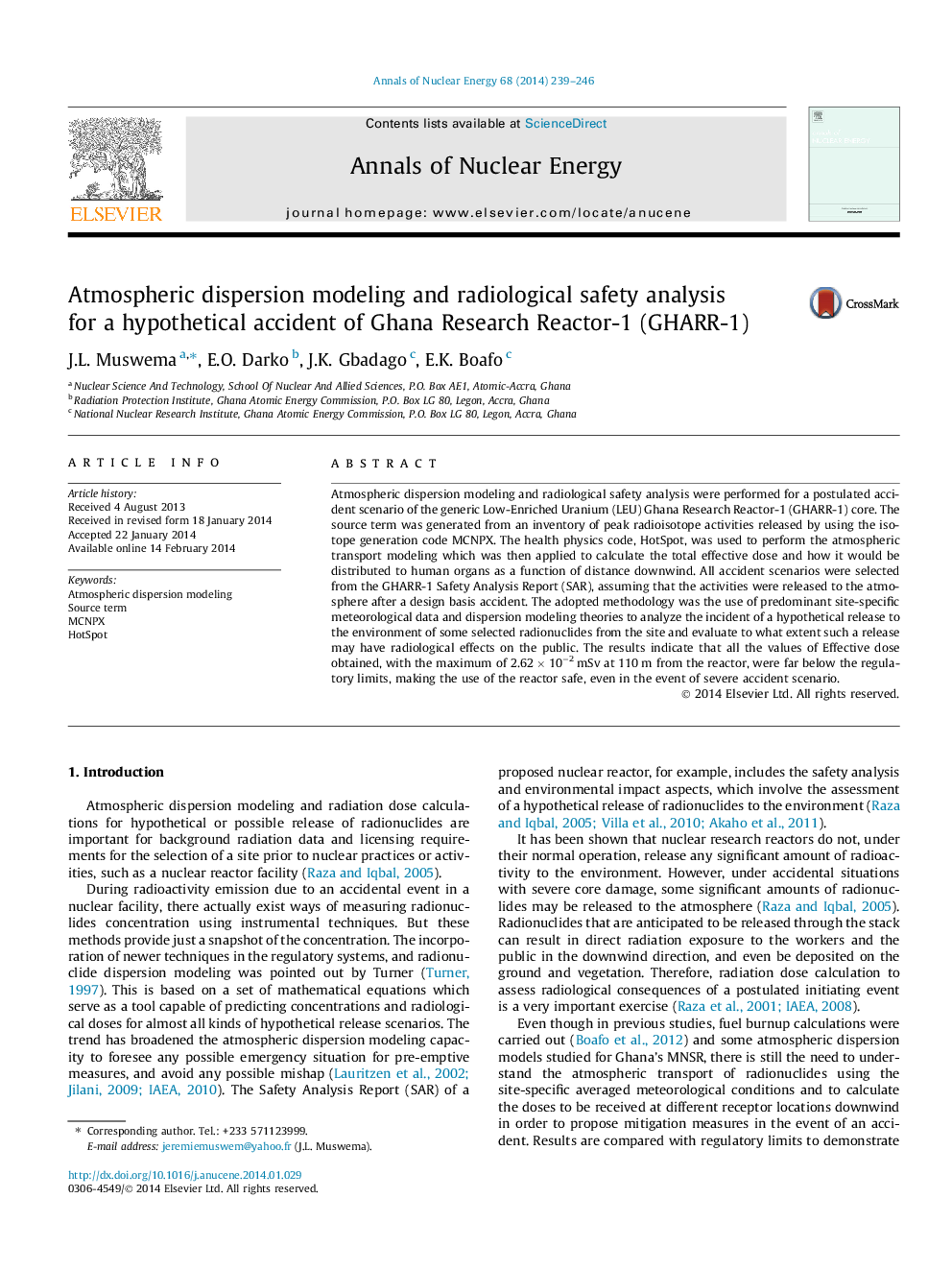| کد مقاله | کد نشریه | سال انتشار | مقاله انگلیسی | نسخه تمام متن |
|---|---|---|---|---|
| 1728371 | 1521130 | 2014 | 8 صفحه PDF | دانلود رایگان |

• An atmospheric dispersion model for a hypothetical accident of Ghana Research Reactor-1 (GHARR-1) was developed.
• Radiological safety analysis after the postulated accident was also carried out.
• The MCNPX and HotSpot codes were used to achieve the objectives of our study.
• All the values of effective dose obtained following the accident were far below the regulatory limits.
Atmospheric dispersion modeling and radiological safety analysis were performed for a postulated accident scenario of the generic Low-Enriched Uranium (LEU) Ghana Research Reactor-1 (GHARR-1) core. The source term was generated from an inventory of peak radioisotope activities released by using the isotope generation code MCNPX. The health physics code, HotSpot, was used to perform the atmospheric transport modeling which was then applied to calculate the total effective dose and how it would be distributed to human organs as a function of distance downwind. All accident scenarios were selected from the GHARR-1 Safety Analysis Report (SAR), assuming that the activities were released to the atmosphere after a design basis accident. The adopted methodology was the use of predominant site-specific meteorological data and dispersion modeling theories to analyze the incident of a hypothetical release to the environment of some selected radionuclides from the site and evaluate to what extent such a release may have radiological effects on the public. The results indicate that all the values of Effective dose obtained, with the maximum of 2.62 × 10−2 mSv at 110 m from the reactor, were far below the regulatory limits, making the use of the reactor safe, even in the event of severe accident scenario.
Journal: Annals of Nuclear Energy - Volume 68, June 2014, Pages 239–246